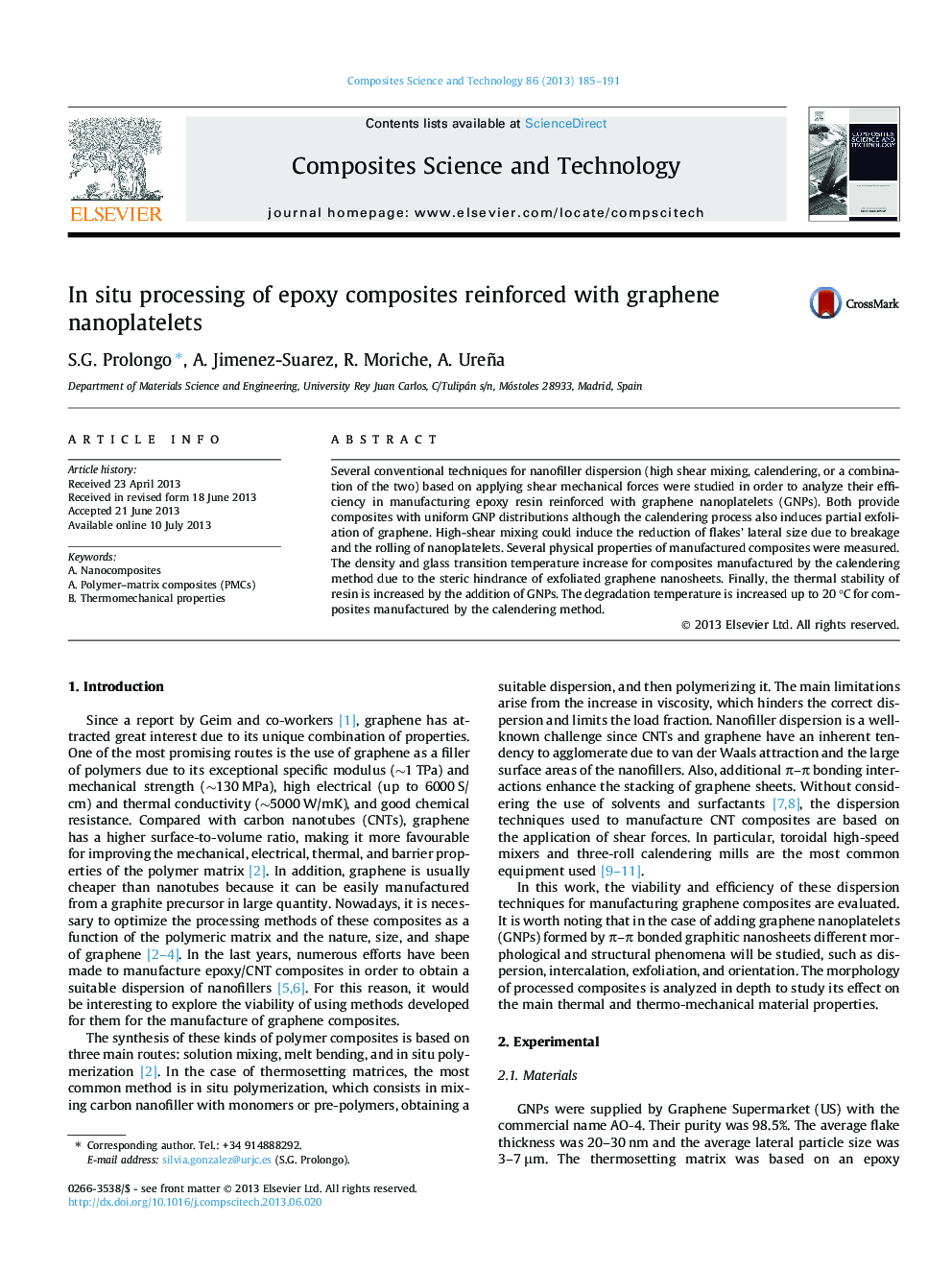| Article ID | Journal | Published Year | Pages | File Type |
|---|---|---|---|---|
| 820427 | Composites Science and Technology | 2013 | 7 Pages |
Several conventional techniques for nanofiller dispersion (high shear mixing, calendering, or a combination of the two) based on applying shear mechanical forces were studied in order to analyze their efficiency in manufacturing epoxy resin reinforced with graphene nanoplatelets (GNPs). Both provide composites with uniform GNP distributions although the calendering process also induces partial exfoliation of graphene. High-shear mixing could induce the reduction of flakes’ lateral size due to breakage and the rolling of nanoplatelets. Several physical properties of manufactured composites were measured. The density and glass transition temperature increase for composites manufactured by the calendering method due to the steric hindrance of exfoliated graphene nanosheets. Finally, the thermal stability of resin is increased by the addition of GNPs. The degradation temperature is increased up to 20 °C for composites manufactured by the calendering method.
